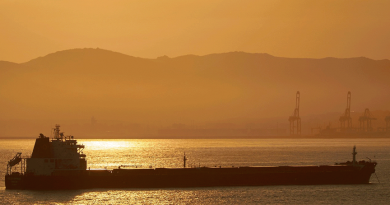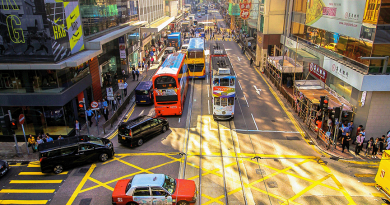Is it time for a new theory to explain crossborder trade?
Sanjay Kumar Mangla is Associate Professor and Head of the Department of Economics, and Nikita Jain and Richa Gupta are Assistant Professors, at the Majaraja Agrasen Institute of Management Studies, Delhi
Can we imagine a world without crossborder movement of goods and services? If not, then it is imperative to know that what determines the quantum and direction of crossborder flow of these products.
Economic literature provides answers to these questions in terms of several trade theories such as Smith 1776, Ricardo 1817, Heckscher & Ohlin 1919, Stopler & Samuelson 1941 to name a few. However, these theories were written based on certain assumptions many of which are not observed in the modern times.
Major constructs of these theories provide reasoning to crossborder movement of goods and services in a world without transport cost where firms employ resources of their home countries only, enjoy constant returns to scale, operate in a perfectly competitive market, and ultimately foreign trade takes place in final goods only.
Further, there used to be a much less possibility of fragmentation of production process which primarily took place under the same roof. This might be due to several reasons, including unavailability of modern information and communication technology (ICT) among several stages of production, along with costly and time-consuming transportation mechanism to shift products across borders, especially between countries which do not share common borders.
However, availability of ICT, fast transportation mechanism and increasing globalization started in 1980s, and enabled companies to became global with fragmented production processes, and countries like China became the world’s factory.
Since then, economists started to establish new postulates that defined international trade. Helpman and Krugman developed ‘New Trade Theory’ in the 1980s which studied crossborder trade in the settings of imperfect competition and increasing returns to scale accounting for intra-industry trade between countries with similar technology and resources.
The main limitation of all these trade theories is that they explain crossborder trade in, primarily, final goods and services and fail to address the international trade in value added products. This is despite the fact that today only 30 per cent of global trade takes place for final goods and services and 70 per cent happens for intermediate goods.
The first such theory explaining trade in intermediate products was ‘Theory of Production Fragmentation’ developed by Jones & Kierzkowski in 1990. The theory puts forward an outsourcing model along with a list of determinants of fragmentation process.
It postulates that companies will shift part of their production process to different places (both domestically as well as internationally) primarily based on productivity and cost levels; and crossborder outsourcing of production process is termed as off-shoring.
The offshoring will increase fixed costs but will improve the overall productivity. Following the Theory of Production Fragmentation, Feenstra & Hanson (1996) empirically established the increase in trade in intermediate products.
Melitz built the ‘New New Trade Theory’ in 2003 which explained how heterogeneous firms could coexist and more productive firms would be able to export more than the less productive ones. The trade in intermediate products/value added goods was first discussed as Global Value Chains (GVCs) in the Rockefeller Foundation-sponsored Global Value Chains Initiative (2000-05), which was then crystallised by Gereffi, Humphrey, and Sturgeon (2005).
Trade in Value Added (TiVA) generates GVCs where production process is fragmented and a final good takes its shape after going through various phases in different parts of the world. GVCs are based on the employment of factors of production from other countries in manufacturing for both domestic and export products.
… what are actual motives of crossborder trade and do they differ according to the government, companies, and other types of organizations?
Baldwin (2006) referred crossborder trading in value added products as ‘unbundling economies’ while Grossman & Hansberg (2008) termed it as ‘trade in tasks’ to examine the benefits of offshoring.
GVCs enable businesses to operate at stage of increasing returns to scale (output increases in larger proportion than increase in inputs) which increases domestic factor earnings. There is no second thought about numerous gains obtained by firms through participation in GVCs as a majority of the companies are practicing globally.
However, it is important to know that what determines decisions of a company to decide which part of the production process should take place where. Probably, a company would choose a location where it can leverage the least cost combination of production factors along with favourable regulatory regimes.
Furthermore, the technical unbundling of manufacturing operations has intensified, with some portions being shifted across national borders to take advantage of cost differences.
The ever-increasing relevance of GVCs for trade and investment calls for proper documentation and recording of statistics of fragmented trade. In this direction, the TiVA database of the Organisation of Economic Cooperation and Development has been proved as a valuable resource to better answer certain questions such as where the maximum value is added along the supply chain, what creates more income and employment, and how to improve bilateral trade imbalances among the others.
Despite of the significant progress in economic literature to predict international trade, all the existing trade theories including the latest ones on trade in intermediate products as mentioned above lack in addressing some of the significant issues including transport cost (which becomes more important in times of global uncertainty with highly fluctuating fuel prices and also constitutes a considerable part of the total cost of production), and influence of trade barriers, primarily non-tariff barriers, which are quite dynamic and varies among countries, impact of dynamic regulatory domestic as well as international socio-politico-economic environment etc.
Thus, the above discussion inspires someone to think that are the existing literature on forecasting global trade and its determinants account for all the factors or some are still left to be included.
Additionally, a bunch of interesting questions certainly demand for better answers such as what are actual motives of crossborder trade and do they differ according to the government, companies, and other types of organizations?
~what are the critical factor that are considered by firms while choosing offshoring locations and does the same factor receive varying importance among different geographical locations?
~is trade in value added driven by companies or countries?
~and how can the naturally rich regions be brought into the mainstream of international trade which have been deprived from its gain for a long time and what are the roles of technology, international organizations and governments here?
The answer to all these questions finally raises another question: is it time for a new theory to explain crossborder trade, especially in intermediate products in context where all assumptions of traditional trade theories become reality?
References
Baldwin, RE (2006). Globalisation: the great unbundling (s) (No. BOOK). Economic Council of Finland.
Feenstra, RC, Hanson, GH (1996). Globalization, outsourcing, and wage inequality.
Gereffi, G, Humphrey, J, Sturgeon, T (2005). The governance of global value chains. Review of international political economy, 12(1), 78-104.
Grossman, GM, Rossi-Hansberg, E (2008). Trading tasks: A simple theory of offshoring. American Economic Review, 98(5), 1978-97.
Helpman, E, Krugman, P (1987). Market structure and foreign trade: Increasing returns, imperfect competition, and the international economy. MIT press.
Jones, R, Kierzkowski, H (1990). The role of services in production and international trade: A theoretical framework. In R Jones, A Krueger, The Political Economy of International Trade (pp. 31-48). Oxford, UK: Basil Blackwell.
Melitz, MJ (2003). The impact of trade on intra-industry reallocations and aggregate industry productivity. Econometrica, 71(6), 1695-1725.




